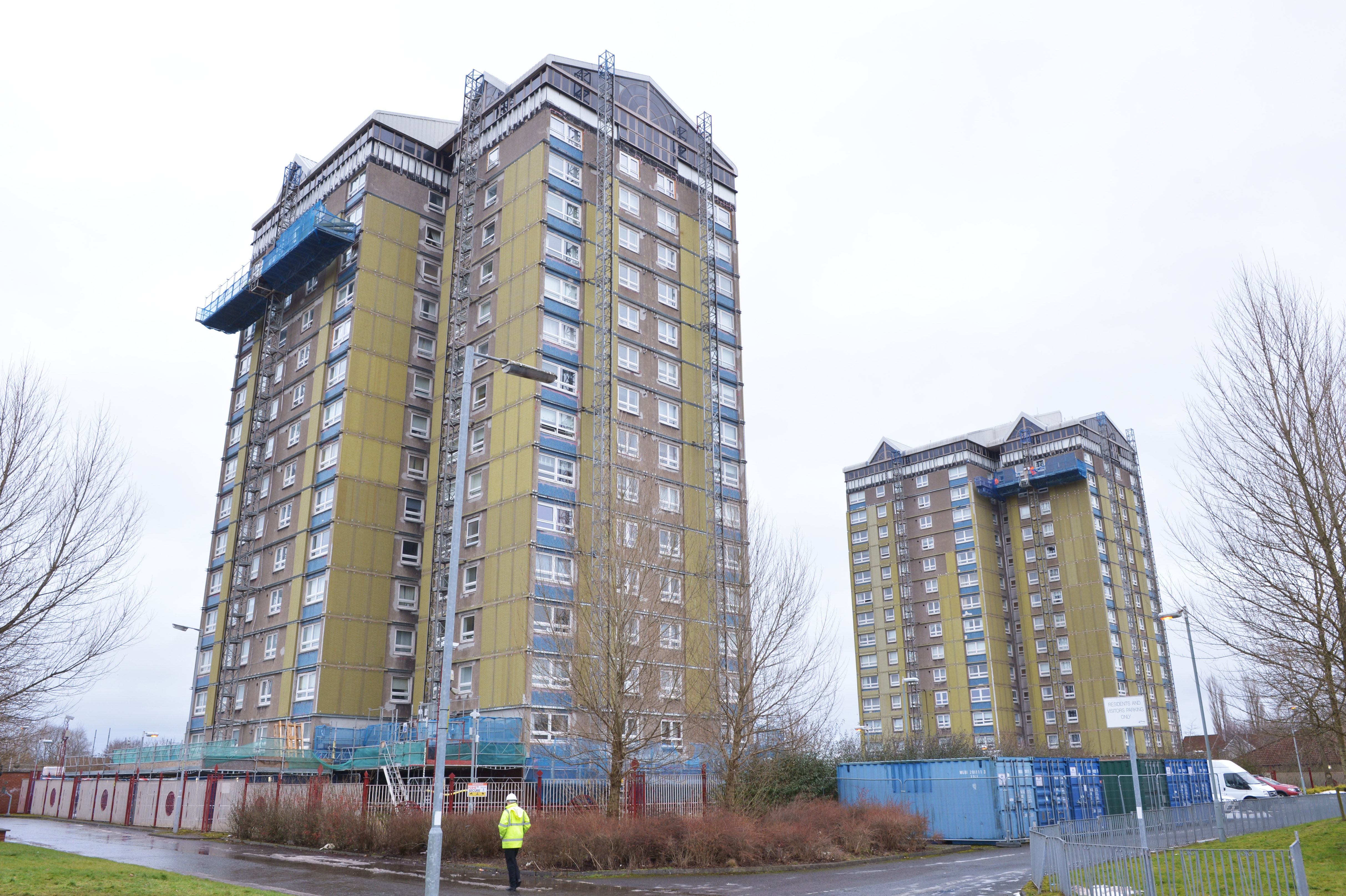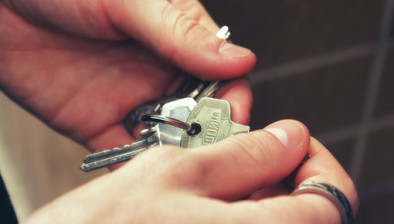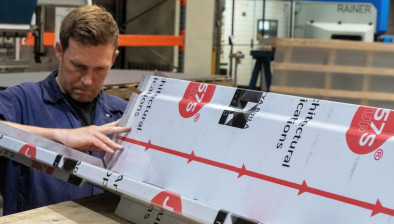Legislation laid to ban combustible materials on high-risk buildings over 11 metres
Legislation to ban developers from using combustible cladding on high-rise buildings has been laid before the Scottish Parliament today.

Renovations were carried out at Glen Court & Millbrae Court in Coatbridge last year
As reported by Scottish Construction Now earlier this month, the Scottish Government wants to ban the use of combustible materials on all new residential and ‘high-risk’ buildings above 11 metres.
Since 2005, new cladding systems on high rise blocks of flats have either had to use non-combustible materials or pass a large-scale fire test. The building standards legislation removes the option of a fire test, completely prohibiting such materials from use on domestic and other high-risk buildings, such as care homes and hospitals, above 11m.
The highest risk metal composite cladding material will be banned from any new building of any height, with replacement cladding also required to meet the new standards.
The Building (Scotland) Amendment Regulations 2022 also includes improvements to energy performance standards, aiming to make buildings easier to heat while ensuring they are well ventilated and comfortable to live in.
Changes to requirements on fire safety of cladding systems will be introduced on 1 June 2022, while improvements to energy and environmental standards will apply from 1 October 2022. The changes have been brought in following public consultations in 2021 on the fire safety of cladding systems and on energy and environmental standards.
Supporting Technical Handbooks, which set out the full detail of changes, will be published from the start of May.
The combustible cladding ban will apply to all buildings with a storey 11m or more above the ground, and which contain:
- a dwelling
- a building used as a place of assembly
- or as a place of entertainment or recreation
- a hospital
- a residential care building or sheltered housing complex or a shared multi-occupancy residential building
Building standards minister Patrick Harvie said: “This is the third set of changes made to fire safety standards for cladding in Scotland since the tragic Grenfell Tower Fire, requiring any cladding on domestic or other high risk buildings above 11m to be strictly non-combustible.
“Taken together with our new fire alarms regulations, covering all homes in Scotland regardless of ownership, this is yet another step on the Scottish Government’s mission to minimise the risk of deaths and injuries from fire.
“The energy improvements will deliver another important step toward improved energy and emission performance of our buildings, and we’ll be going further on this in 2024 with regulations requiring new buildings to use zero-emissions heating systems.”





















